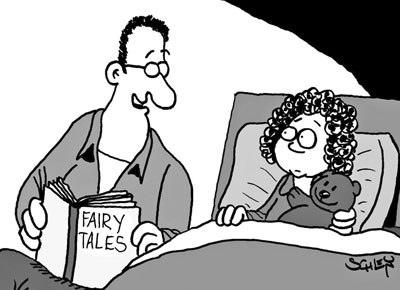The secondary market for bonds
As you have seen, a bond has a second price component besides its initial face value. This is the price of the bond as it trades in the secondary market, or its market value (MV).
Bonds trading in the secondary market will usually be priced either higher or lower than their original issue price. Changes in a bond’s price are linked to the following factors:
- i.prevailing interest rates
- ii.inflation
- iii.the bond’s credit rating.
(i) Prevailing interest rates
Assume, again, you have purchased a bond at par with a face value of £1000 and an annual coupon rate of 5%. The annual coupon payment will be equal to £50 (i.e. £1000 × 0.05). However, after your purchase the market value of your bond might fluctuate as a result of changes in interest rates. Suppose the prevailing (or the market) interest rate rises to 6%. Since new bonds are now being issued with a 6% coupon, your bond is no longer worth as much as it was when you bought it with a 5% coupon. Your bond becomes less attractive to other investors as they can invest £1000 to purchase a bond with a higher coupon rate. In this case, the market value of your bond will be less than £1000, the bond will be trading at discount.
By way of contrast, if the market interest rate falls from 5% to 4% after your bond purchase, the market value of your bond will rise, as investors will not be able to buy a new issued bond with a coupon rate as high as yours. In this case, the bond’s price will increase to £1,250 (£50/0.04), hence it will be trading at premium to par. This can be summarised by saying that a price of a bond fluctuates inversely with the prevailing interest rate, as shown in Table 10.
| Bond coupon | Prevailing interest rate | Demand from investors | Bond price |
|---|---|---|---|
| 5% | 6% | Decrease | Decrease |
| 5% | 4% | Increase | Increase |
In either scenario, the coupon rate loses meaning for a new investor. However, it is possible to roughly estimate the bond’s current yield by dividing its annual coupon payment by its market value. For example, if you purchased a bond on the secondary market that had a FV of £1000, with a 5% annual coupon rate, for £1200, the current yield would be equal to 4.2% (i.e. (£50/£1200) × 100). By way of contrast, if you purchased that same bond for £900, the current yield would be 5.6% (i.e. (£50/£900) × 100). These changes in current yield are summarised in Table 11.
| Face value (FV) | Purchase price | Annual coupon rate | Annual coupon payment | Current yield |
|---|---|---|---|---|
| £1000 | £1000 | 5% | £50 | 5% |
| £1000 | £1200 | 5% | £50 | 4.2% |
| £1000 | £900 | 5% | £50 | 5.6% |
(ii) Inflation
Corporate bonds are also vulnerable to inflation. Bondholders receive interest set at a predetermined rate that is fixed on issue. As a consequence, if inflation rises, the return a bondholder will earn at maturity will be worth less in today’s pounds. Rising inflation often causes interest rates to increase, which in turn reduces the price of a bond. Conversely, deflation usually results in decreasing interest rates and, therefore, in increasing bond prices.
(iii) Credit ratings
Credit ratings also affect a bond price. The lower the credit rating, the higher the risk the issuer will not meet its payment obligations. Consequently, if the issuer’s credit rating goes up, the bond price will rise. Conversely, if the issuer’s credit rating goes down, the bond price will fall.

